The lengthy and ongoing closure of Botley Road in Oxford to enable rail bridge replacement works continues to anger residents. But what exactly does the project entail, and how has work progressed? Chis Howe reviews the story so far.
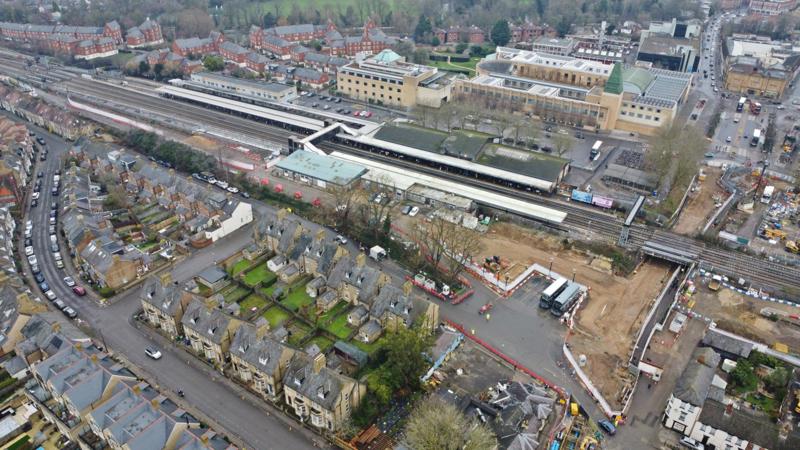
The lengthy and ongoing closure of Botley Road in Oxford to enable rail bridge replacement works continues to anger residents. But what exactly does the project entail, and how has work progressed? Chis Howe reviews the story so far.

The rebuilding of the railway bridge over Botley Road in Oxford was originally scheduled to take 12 months, split into two six-month periods between April and October 2023 and March and October 2024.
The initial closure was intended to allow Kier, working in conjunction with utility providers, time to divert pipes and cables which run along Botley Road. This included diverting a large diameter water main which serves around 60,000 residents.
However, at the beginning of 2025, there was no sign of the closure being lifted. And the brief reopening of the road throughout the winter of 2023 never took place, despite the road having closed in April 2023 (RAIL 1028).
The closure to allow for replacement of the bridge is part of the wider £161 million Oxfordshire Connect scheme, which aims to provide capacity for additional train services and the increased number of passengers expected by the introduction of East West Rail services from Oxford to Milton Keynes.
As part of the scheme, track and signalling upgrades were carried out during a nine-day blockade in the summer of 2023, during which high-speed crossovers to the north of the station were installed and signalling was updated. Further upgrades were carried out during the summer of 2024, when 350 metres of track was replaced.
Although the track and signalling upgrades form a key part of the Oxfordshire Connect scheme, the single largest element is the addition of a fifth platform at Oxford railway station and the construction of a new entrance on the western side of the station.
The addition of the platform and the section of track leading to the platform requires the construction of a new bridge span, crossing Botley Road on the western side of the existing four-track span.
As well as building a new bridge span, Network Rail was taking the opportunity to replace the main span over Botley Road. It intended to lower the road itself to provide extra clearance for ‘standard’-height double-deck buses to pass safely underneath.
The clearance underneath the bridge before the closure had been four metres, which provided space only for lower-height double-deck buses to pass underneath - albeit when driven cautiously.
As well as providing additional clearance, construction of the new bridge spans provided an opportunity to improve provision for pedestrians and cyclists. To that end, the plan for the new bridge included four-metre-wide combined cycle and footpaths on both sides of the road.
The new western entrance, which Network Rail anticipates will handle 20% of the entries and exits, will be built on the corner of Botley Road and Cripley Road. There will be step-free access from the new entrance to the platforms, with lifts and stairs to be constructed.
At the time of writing, it had been 20 months since the road was closed, and to ordinary residents or passengers it may appear as if very little progress has been made.
But the challenges of negotiating with 11 separate utility companies should not be underestimated. The process of agreeing where and how utilities should be moved to, and how much it will cost, can be protracted.
Before any work can take place, the project promoter (in this case Network Rail) has to obtain cost estimates from the utilities companies to move their services, which are based on the current location of documented utilities.
Once a ‘C4 estimate”’ is provided, Network Rail has 20 days to accept the quote and provide payment, after which it could be a number of weeks or months before the utility diversion works can proceed.
One of the biggest challenges appears to have been the relocation of a large-diameter water main.
This has involved close collaboration between Keir (responsible for the bridge replacement) and Barhale (working on behalf of Thames Water) to relocate the main.
After months of work, the diversion is entering a crucial phase, and Barhale is preparing to connect the new section of pipe to the section which crosses Osney Bridge. This section of the main was also in the process of being replaced, as the existing pipe which previously ran underneath Osney Bridge was found to be damaged.
Work was also taking place on the opposite side of Botley Road bridge in Frideswide Square, to prepare to install what is known as a ‘line stop’. This was to allow Thames Water to shut off the existing supply so that the new main can be connected.
As well as moving known utilities, a number of unmapped and unclaimed cables were also identified on each side of the bridge.
The cables were not believed to be live, but as a precaution SSE tested each of the cables using a technique known as ‘spiking’. This process involves using a piece of equipment to force a steel spike through the cable, to test if it is live or not.
Network Rail reported at the beginning of January that after months of work to divert utilities, work to install the foundations for the bridge were set to get under way.
In December, a ‘piling mat’ had been completed which involved compacting gravel beneath the bridge to form a firm and level base on which a piling rig will operate.
Although the project appears to be progressing to the construction phase, at the beginning of January Network Rail announced that the scheme was being reviewed.
A spokesperson for NR said: “We continue to work with the Department for Transport and local authority partners as we undertake a full review of the programme, and will provide an update on timescales for the next steps of the project as soon as we’re able.
“The review will look at what has been achieved so far, what remains to be done, plus the timescales and budget required. It will also consider options for rescheduling the replacement of Botley Road railway bridge.”
On January 24, Rail Minister Lord Hendy and NR Chief Executive Sir Andrew Haines visited Oxford to provide an update for residents, businesses owners and local leaders. During the meeting, it was announced that the road would remain closed until August 2026.
Prior to the start of the Oxfordshire Connect scheme, Network Rail had stated that Oxford station did not have sufficient capacity to provide additional railway services.
However, East West Rail Co. says the delay to the Botley Road scheme will not impact the introduction of its two trains per hour service from Oxford to Milton Keynes, calling at Oxford Parkway, Bicester Village, Winslow and Bletchley high-level.
The upgrades carried out to the north of Oxford station appear to have provided sufficient capacity for the new service to commence.
In addition, the new service to Milton Keynes will start/terminate at one of the two north-facing bay platforms, so will not be affected by the work to replace the bridge, which is taking place to the south of the station.
Additional capacity may potentially be required to operate an hourly service between Oxford to Bedford service, but this will not be introduced until 2030 at the earliest, following completion of the Marston Vale “accelerator’ upgrade.
This initial upgrade will provide capacity on the Marston Vale line for one additional service per hour to operate between Bletchley and Bedford, prior to completion of the proposed new section of railway between Bedford and Cambridge.
If the new railway is built, additional capacity will be required at Oxford station for the proposed two trains per hour service from Oxford to Cambridge, which would be in addition to the Oxford to Milton Keynes service.
The East West Rail consultation launched in November 2024 provided more details regarding the options that are being considered to provide the required capacity.
The initial route update report published in May 2023 had proposed building a new turn-back to the south of the station.
However, this now appears to have been ruled out. Instead, the options now being considered include merging EWR trains with existing services - such as the service to Didcot or the proposed service to Cowley.
This could potentially result in services from Cambridge continuing south to Didcot and or Cowley, rather than terminating at Oxford, although extending services to Cowley is dependent on funding being provided to reopen the branch line.
EWR Co. also says it is undertaking further analysis to identify if further works will be required at Oxford station, to provide capacity for the increased number of passengers. This work could include adjustments to the platform layout and stairways to increase station throughput.
So, while there seems to be little detail regarding the delivery of the new bridge, it is perhaps reassuring that the delay to the works will not affect the introduction of new EWR services which are set to be introduced this year.
Login to continue reading
Or register with RAIL to keep up-to-date with the latest news, insight and opinion.


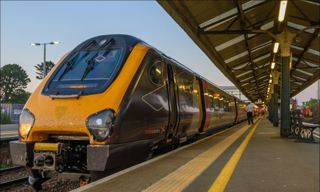
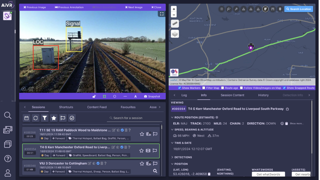
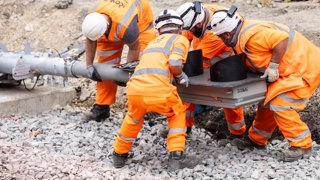
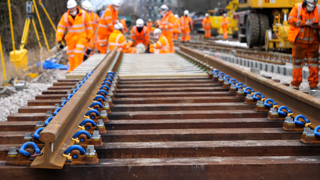











Login to comment
Comments
No comments have been made yet.